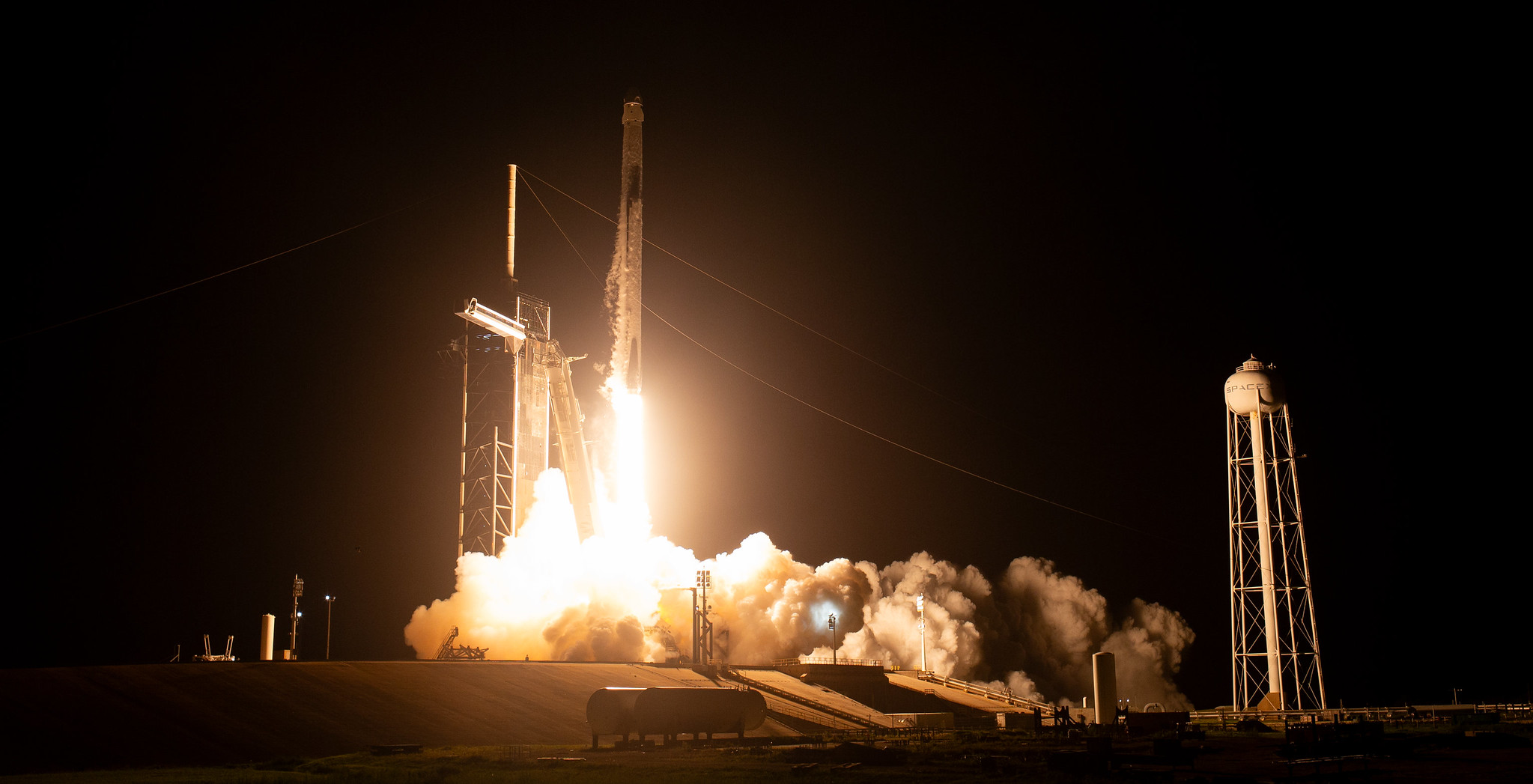WASHINGTON — A Falcon 9 launched a multinational crew to the International Space Station Aug. 26 after a one-day delay to check the spacecraft’s life support system.
The SpaceX Falcon 9 lifted off from Launch Complex 39A at the Kennedy Space Center at 3:27 a.m. Eastern on the Crew-7 mission for NASA. The Crew Dragon spacecraft Endurance separated from the Falcon 9’s upper stage a little more than 12 minutes later.
Endurance, with its crew of four, is scheduled to dock with the zenith port on the Harmony module of the ISS at 8:39 a.m. Eastern Aug. 27. That will kick off a roughly six-month stay on the station.
The launch was scheduled for Aug. 25 but postponed several hours before the scheduled liftoff. NASA said that engineers needed more time to review a component of the Crew Dragon’s life support system, known as ECLSS. NASA did not initially state what that component was but later said it was valves in an air supply system.
Steve Stich, NASA commercial crew program manager, said at the post-launch briefing that after discovering corroded valves in the propulsion system of a cargo Dragon in June, SpaceX “out of an abundance of caution” decided to review all valves on the spacecraft, including for life support and propulsion. The review was designed to check the “force margin,” or the ability of the valve to open and close.
“It took a little bit more time to get through the ECLSS valves,” he said, which led to the one-day slip. “We said, let’s stand down for 24 hours and make sure we understand it before we go fly.” That review confirmed that the valves were working properly and required no changes.
During the launch countdown, controllers reported a sensor issue that was cleared shortly before liftoff. At the post-launch briefing, officials said that sensors had detected trace amounts of nitrogen tetroxide, or NTO, from the Crew Dragon spacecraft that indicated a possible propellant leak. NTO is one of the two hypergolic propellants used by the spacecraft’s thrusters.
Benji Reed, senior director of the human spaceflight program at SpaceX, said at the post-launch briefing that the levels of NTO detected were about 0.25 parts per million. Three engineers independently calculated what level of leak could cause that reading and all three came to the same conclusion. “The good news was that the number that we came up with was well within the range of what you might normally see.”
That assessment, though, came down to the wire. “We were working the problem and we cleared it within the last two minutes of the count,” he said.
Crew-7 is the first commercial crew flight to carry people from four different agencies. The mission is commanded by NASA astronaut Jasmin Moghbeli on her first flight to space. European Space Agency astronaut Andreas Mogensen is the pilot; he made a 10-day trip to the station on a Soyuz spacecraft in 2015. Satoshi Furukawa of the Japanese space agency JAXA and Roscosmos cosmonaut Konstantin Borisov are mission specialists. Furukawa flew a long-duration mission to the ISS in 2011 while Borisov is on his first trip to space.
That multinational lineup was simply how the crew assignments worked out, said Joel Montalbano, NASA ISS program manager, at a preflight briefing Aug. 21. “The way the timing worked out for this one with our integrated crew agreement that we have with Roscosmos, it was time for these other folks to fly,” he said.
Stich said at that briefing that another milestone for Crew-7 is having a non-NASA astronaut, Mogensen, be a Crew Dragon pilot for the first time. “It’s a very big deal for us,” he said then.
Such multinational crews will not always be the case. The next Crew Dragon mission to the ISS, Crew-8 launching in early 2024, will have three NASA astronauts and one Roscosmos cosmonaut.
The arrival of Crew-7 will allow NASA to begin preparations for the return of the Crew-6 mission, which has been on the station for nearly six months. Montalbano said at the post-launch briefing that the agency was planning a five-day handover between Crew-6 and Crew-7 before Crew-6 departs on the Crew Dragon spacecraft Endeavour. That timing, though, will depend on weather at splashdown locations off the Florida coast, which could be affected by the expected formation of a tropical storm in the Gulf of Mexico in the next several days.
